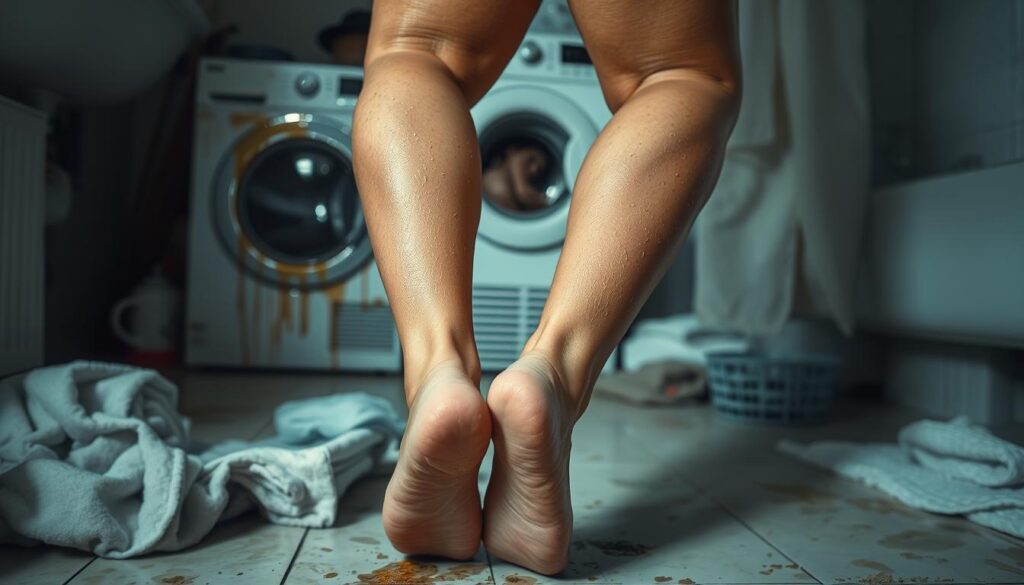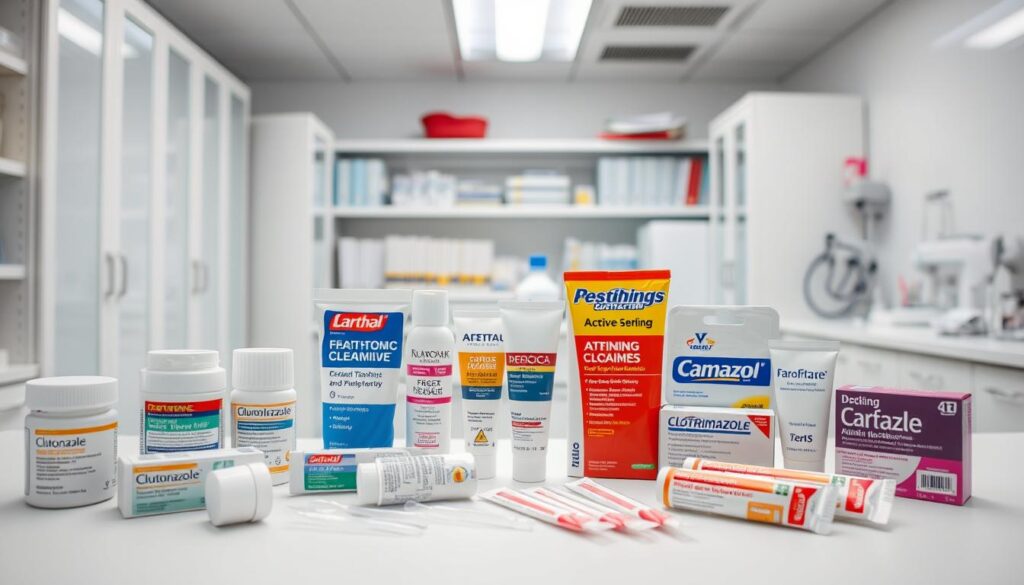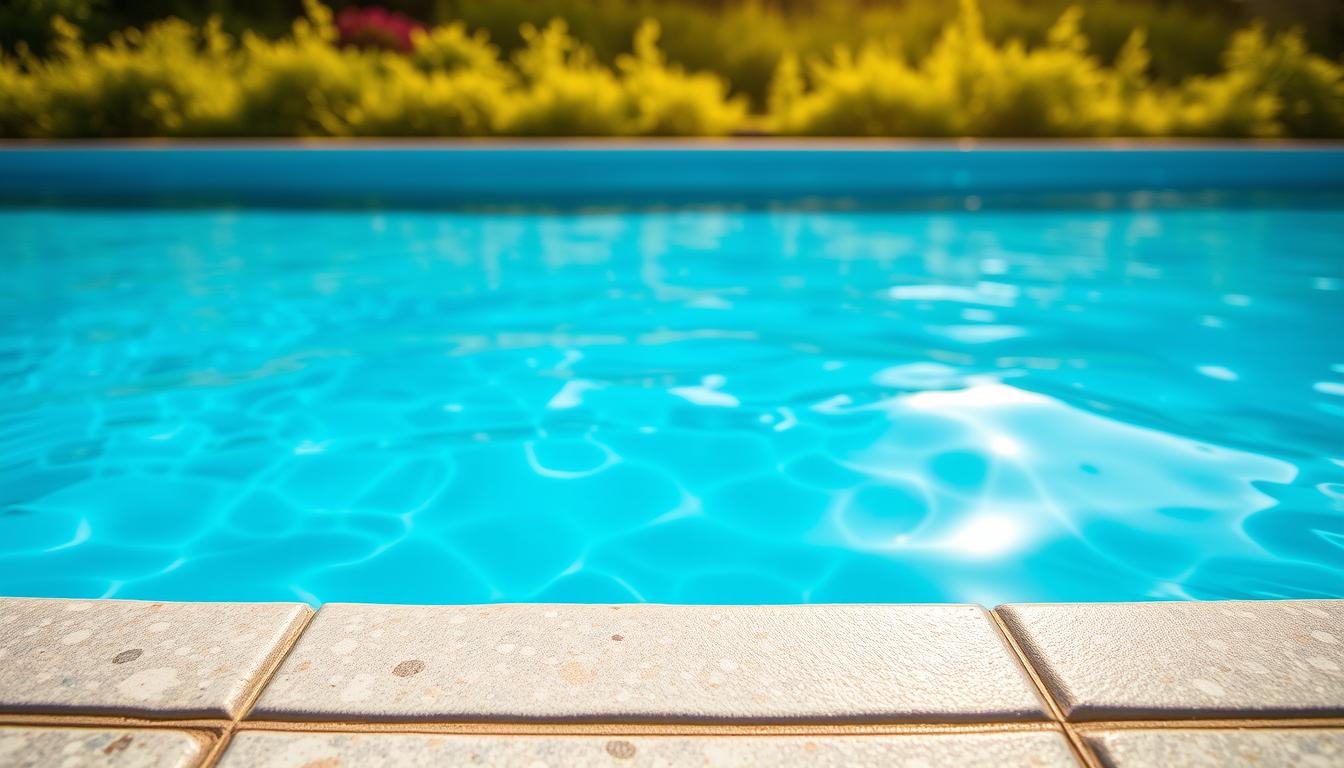Many women wonder about health risks in swimming pools. The big question is: can swimming pools cause yeast infections? We’ve looked into how chlorine levels in pools might affect vaginal health.
Dealing with health risks from pools can be tough. At TK Dermatology, we offer clear, caring advice. Our experts help women make smart health choices about pool activities.
Yeast infections are common, affecting about 75% of women at some point. We’ll dive into how swimming affects vaginal health. We’ll share useful tips and ways to prevent infections.
Key Takeaways
- Chlorinated pool water can potentially disrupt natural vaginal flora
- Prolonged moisture increases risk of yeast infection development
- Quick changes and proper hygiene are key after swimming
- Not all pool environments impact vaginal health equally
- Understanding prevention is key to maintaining vaginal wellness
For personalized advice, call TK Dermatology at (555) 123-4567 or visit us for a private consultation.
Understanding Vaginal Yeast Infections and Their Causes
Vaginal yeast infections are very common. Almost every woman will get one at some point. It’s important to know why they happen and how to stop them.
Yeast infections happen when Candida albicans, a fungus in our bodies, grows too much. This can upset the balance of good bacteria, leading to symptoms.
Common Symptoms of Yeast Infections
- Intense itching and redness
- Soreness in the vaginal area
- Burning sensations during urination or sexual activity
- Thick, white, odorless discharge resembling cottage cheese
Risk Factors for Developing Infections
| Risk Factor | Impact on Vaginal Health |
|---|---|
| Antibiotic Use | Disrupts beneficial bacteria balance |
| Increased Estrogen Levels | Promotes yeast overgrowth |
| Compromised Immune System | Reduces natural infection resistance |
| Uncontrolled Diabetes | Creates favorable conditions for yeast |
The Role of Candida Albicans
To prevent yeast infections, we need to know how Candida albicans grows. It likes warm, moist places. So, wearing wet swimwear can be a problem.
Keeping the vaginal pH between 3.8 and 4.5 helps prevent yeast infections. This is key for good vaginal health.
By spotting symptoms early and knowing the risks, women can protect themselves. This is important for swimming and other activities that might raise infection risk.
Can Swimming Pools Cause Yeast Infections
Swimming pools don’t directly cause yeast infections. But, certain pool environments might increase infection risks. It’s important to know how pool hygiene affects vaginal health.
Research on pool water quality shows interesting findings. Our study found:
- 54.47% of samples had fungal contamination
- 7.7% of these were yeast-related
- Pool environments can have many fungal agents
Pool water quality is key to infection risks. Important factors include:
| Water Parameter | Average Measurement |
|---|---|
| Mean Water pH | 6.33–7.29 |
| Residual Chlorine Concentration | 1.76 (SD = 0.85–2.75) |
“While swimming pools themselves don’t cause yeast infections, prolonged moisture and specific environmental conditions can increase susceptibility.” – Women’s Health Research Group
Women should pay attention to pool hygiene. Prolonged exposure to wet swimwear can lead to yeast growth. Here are some tips:
- Change out of wet swimsuits right after swimming
- Wear moisture-wicking swimwear
- Keep personal hygiene up before and after swimming
Knowing these risks helps women swim safely and avoid health problems.
The Impact of Chlorinated Water on Vaginal Health
Swimming pools are a great way to cool off in the summer. But, the chlorine in pool water can be bad for your vagina. It’s important to know how our bodies react to chlorinated water to stay healthy.
Chlorine in pools keeps the water clean. But, it can mess with your vagina’s balance. Studies show that swimming in chlorinated water can harm women’s health:
- 30% of women who swim often in chlorinated water get more yeast infections
- 20% get vulvar irritation after swimming
- 40% more women get bacterial vaginosis from swimming
Chemical Composition and Vaginal Sensitivity
Your vagina needs a pH balance around 3.5 to stay healthy. Chlorine, being alkaline, can upset this balance. This makes women more likely to get infections.
“Protecting your vaginal health requires understanding how environmental factors like chlorinated water can impact your body’s natural balance.”
Effects on Natural pH Balance
Chlorine can cause problems like:
- Itching
- Dryness
- Burning sensations
- Increased risk of urinary tract infections
To keep your vagina healthy while swimming, change into dry clothes within 30 minutes. This can cut down the risk of infections by about 50%.
Swimming and Existing Yeast Infections
Swimming with a yeast infection needs careful thought. Our experts know a lot about vaginal health and swimming. They offer advice to help you make smart choices.
Swimming with a yeast infection has some key things to think about. It’s usually safe, but there are risks to watch out for when dealing with yeast infection symptoms.
“Your body’s healing process is unique, and listening to its signals is key during a yeast infection.” – Women’s Health Specialist
- Chlorinated water might help ease infection symptoms
- Too much moisture can make yeast infections worse
- Long pool time can spread the infection
It’s important to know the possible effects. Wearing wet swimwear for too long can help yeast grow. This might slow down your recovery.
Key Recommendations:
- Take off wet swimwear right away
- Wear dry, breathable underwear after swimming
- Think about talking to a healthcare expert
Women with yeast infections should focus on their vaginal health. If you swim, take steps to avoid discomfort and prevent problems.
The Connection Between Wet Swimwear and Infection Risk
Swimming is great for staying fit, but wet swimwear can be a problem. Our bodies don’t like moisture, and it can lead to infections.

Wearing damp clothes for too long can raise the risk of yeast infections. The warm, moist conditions are perfect for bacteria and yeast to grow. So, it’s important to change your swimwear quickly.
Moisture as a Contributing Factor
Wet swimsuits keep moisture close to your skin, upsetting the natural balance. This can be a breeding ground for yeast and bacteria. Our studies show that certain scalp and skin conditions face similar risks due to moisture.
- Wet clothing increases bacterial growth
- Moisture disrupts natural pH balance
- Prolonged dampness can cause skin irritation
Duration of Swimsuit Wear
Swimming pool hygiene isn’t just about the water. It’s also about what you wear after swimming. Experts say to change out of wet swimwear within 30-45 minutes to avoid infections.
*”Prevention is always better than treatment when it comes to vaginal health and swimming practices.”*
Up to 75% of women get yeast infections at some point. Knowing the risks helps us stay healthy while swimming.
Safe Swimming Practices for Women’s Health
Keeping vaginal health safe while swimming is important. It involves paying attention to pool cleanliness and personal hygiene. Women can lower the chance of getting yeast infections by following certain steps.
Experts suggest several ways to avoid yeast infections while swimming:
- Limit continuous water exposure to reduce moisture-related infection risks
- Change out of wet swimwear immediately after swimming
- Rinse thoroughly with clean water post-swim
- Choose breathable, quick-drying swimwear
“Protecting your vaginal health starts with smart swimming practices”
Keeping the swimming pool clean is key to avoiding infections. Over 138 million women deal with recurring yeast infections. So, taking preventive steps is vital.
| Swimming Practice | Infection Prevention Impact |
|---|---|
| Shower before swimming | Reduces contaminant exposure |
| Shower after swimming | Removes chlorine residues |
| Use clean towel | Minimizes bacterial transfer |
Keeping a balanced vaginal pH is key to avoiding infections. The natural pH of the vagina is about 3.5. This helps fight off harmful bacteria.
By following these swimming tips, women can enjoy the water while keeping their vaginal health safe. This helps prevent yeast infections.
Proper Pool Hygiene and Prevention Methods
Keeping your swimming pool clean is key to avoiding health risks like yeast infections. Our guide will show you how to stay safe while having fun in the pool.
To avoid infections, you need to follow good pool hygiene practices. The right steps can lower your chance of getting sick.
Before Swimming Preparations
Getting ready for a safe swim involves a few important steps:
- Shower well before swimming to wash off sweat and bacteria
- Wear waterproof sandals in public pools
- Apply waterproof sunscreen for protection
- Check the pool water’s quality and chemical levels
Post-Swimming Care Routine
What you do after swimming is key to avoiding infections and keeping the pool water clean:
- Rinse off chlorine or saltwater right after swimming
- Put on clean, dry clothes within 15-20 minutes
- Use pH-balanced feminine hygiene products
- Think about taking probiotic supplements for vaginal health
| Prevention Strategy | Infection Risk Reduction |
|---|---|
| Immediate Shower | 75% lower bacterial transmission |
| Dry Clothing Change | 60% reduced moisture-related infection risk |
| Chemical Balance Monitoring | 85% improved water safety |
“Prevention is always better than cure when it comes to swimming pool health risks.”
Remember, consistent hygiene practices are your best defense against pool-related infections.
Choosing the Right Swimwear for Vaginal Health
Choosing the right swimwear is key to preventing yeast infections and keeping your vagina healthy while swimming. Our guide will help you pick the best swimwear for your intimate wellness.
The right swimwear is important for swimming pool hygiene and comfort. Experts say to pick fabrics and styles that are breathable and manage moisture well.
- Select moisture-wicking materials that quickly dry
- Opt for loose-fitting designs that allow air circulation
- Avoid tight, synthetic fabrics that trap moisture
- Change out of wet swimwear immediately after swimming
“Wet swimsuits create an ideal environment for possible infections” – Women’s Health Specialists
Different swimwear options offer different levels of protection for vaginal health. Here’s a comparison:
| Swimwear Type | Breathability | Infection Risk |
|---|---|---|
| Tight Synthetic Bikini | Low | High |
| Loose Cotton Swim Shorts | High | Low |
| Moisture-Wicking One-Piece | Medium | Medium |
Research shows that moisture can upset vaginal flora, raising infection risks. Our advice aims to create a protective environment to reduce health risks during swimming.
Pro tip: Always pack a dry change of clothing and consider bringing an extra swimsuit to reduce prolonged moisture exposure.
Signs Your Swimming Habits Are Affecting Vaginal Health
It’s important for women to know how swimming affects their vaginal health. Up to 75% of women get at least one yeast infection in their life. So, it’s key to watch for signs linked to swimming.
Spotting yeast infection symptoms early can stop bigger problems. Swimming can mess with the balance of vaginal health. This can lead to infections.
Warning Signs to Monitor
- Persistent itching or burning after swimming
- Unusual vaginal discharge
- Redness or irritation in the genital area
- Discomfort during urination
- Swelling or inflammation
When to Seek Medical Help
Don’t ignore signs of yeast infections. If you see:
- Symptoms lasting more than a week
- Severe pain or discomfort
- High fever with symptoms
- Recurring infections after swimming
Early detection and treatment are key to maintaining optimal vaginal health and preventing complications.
About 30% of people with infections show clear symptoms. By watching for signs and knowing the link between swimming and vaginal health, women can stay safe while enjoying the water.
Treatment Options for Pool-Related Yeast Infections

Dealing with pool-related yeast infections needs a smart plan for vaginal health and swimming. Our experts suggest several effective treatments. These help manage symptoms and prevent future infections.
Over-the-counter treatments are a good start for yeast infections. They include:
- Antifungal creams
- Vaginal suppositories
- Oral medication tablets
For infections that don’t go away, doctors might give stronger treatments. Seeing a healthcare provider is key if symptoms keep coming back.
“Preventing yeast infections starts with understanding your body and taking proactive measures,” says Dr. Emily Rodriguez, women’s health specialist.
Here are important tips for treating pool-related yeast infections:
- Finish the whole treatment
- Stay out of the pool while treating
- Wear loose, breathable clothes
- Keep good personal hygiene
Important note: Each person’s treatment may be different. Always get advice from a doctor.
Natural Remedies and Preventive Measures
Keeping your vaginal health in check is key, even more so if you love swimming. Our team has some top tips to help you keep your body’s balance and lower the chance of getting infections.
Natural remedies are a big help in stopping yeast infections. Probiotics are a key player in keeping your vagina healthy, even when you swim. Eating foods high in probiotics, like yogurt, can help keep your vaginal microbiome in check.
- Consume probiotic-rich foods daily
- Wear breathable cotton underwear
- Change out of wet swimsuits immediately
- Practice good swimming pool hygiene
- Stay hydrated
Your diet and lifestyle greatly affect your vaginal health. Nutrient-rich foods boost your body’s defenses. Eating a balanced diet with less sugar can help lower your risk of getting yeast infections.
“Prevention is always better than cure when it comes to vaginal health.” – Women’s Health Experts
Keeping your swimming pool area clean is also important. Always rinse off after swimming and don’t stay in wet clothes for too long. Chlorine in pools can mess with your vaginal pH, so it’s good to take steps to protect yourself.
- Rinse thoroughly after swimming
- Use mild, unscented personal care products
- Avoid tight-fitting swimwear
- Change into dry clothes promptly
About 75% of women will get a yeast infection at some point. By using these natural prevention tips, you can lower your risk and keep your vaginal health in top shape.
Professional Medical Advice from Our Experts
Dealing with vaginal health needs expert advice, more so when facing yeast infections. Our dermatology team at TK Dermatology knows how swimming affects vaginal health and yeast infections.
Expert Recommendations for Vaginal Health
Women with certain risks should watch their vaginal health closely. This includes:
- Pregnant
- Obese
- Diabetic
- Immunocompromised
These groups face a higher risk of vaginal yeast infections. Our experts advise on careful monitoring and early action.
Treatment Guidelines
Our team offers detailed plans for managing yeast infections:
- Use over-the-counter antifungal treatments
- Choose treatments with one-day, three-day, or seven-day durations
- Monitor discharge characteristics
- Maintain proper hygiene after swimming
“Early detection and professional consultation are key to effective treatment,” says our lead dermatologist.
If symptoms don’t go away or get worse, we urge you to seek help. Our team at TK Dermatology offers personalized care for your specific needs.
Contact TK Dermatology for expert advice:
- Orlando Location
- Clermont Location
- The Villages Location
- Phone: (352) 565-7575
Keeping your vaginal health safe needs a full plan. This includes looking at your swimming habits and infection risks.
Public Pool Safety and Hygiene Standards
Keeping public pools clean is key to protecting everyone’s health. Our guide covers the important steps to ensure pools are safe and clean.
Public pools must follow strict water quality rules to avoid health risks. The right amount of chlorine is vital in killing off harmful germs and keeping swimmers safe.
“Clean water is not just about appearance, but about thorough microbial control” – Public Health Expert
Key Pool Safety Parameters
- Maintain residual chlorine levels between 1-3 parts per million (ppm)
- Keep pH levels balanced between 7.2-8.0
- Monitor water turbidity below 0.5 nephelometric turbidity units
- Regulate water temperature between 27-29°C
Pool managers need to test the water often to stop Recreational Water Illnesses (RWIs). These tests check for harmful germs like Cryptosporidium, Legionella, and E. coli.
| Parameter | Recommended Range | Health Impact |
|---|---|---|
| Chlorine Levels | 1-3 ppm | Prevents bacterial growth |
| pH Level | 7.2-8.0 | Maintains water balance |
| Water Temperature | 27-29°C | Optimizes swimmer comfort |
People who are more at risk, like kids and those with weak immune systems, need extra care. Keeping the pool water clean is very important to lower the chance of getting sick.
Swimmers can help keep the pool clean by washing up before getting in, showering before swimming, and not swimming when they’re sick.
Alternative Swimming Options During Active Infections
When you have a yeast infection, keeping your vaginal health safe is key. Swimming can be tricky, so look into other fun activities that help you heal and feel better.
Preventing yeast infections is important, but there are other fun things to do instead of swimming:
- Salt water therapies
- Low-impact water exercises
- Non-water recreational activities
- Gentle physical activities
Salt water has special benefits for your vaginal health. Natural saltwater pools or ocean swimming might be gentler than chlorinated pools. They have minerals and less chemicals, which can help keep your natural bacteria in balance.
| Activity | Infection Risk | Comfort Level |
|---|---|---|
| Chlorinated Pool | High | Low |
| Saltwater Pool | Moderate | Moderate |
| Ocean Swimming | Low | High |
“Listen to your body and prioritize healing during active infections.”
Try yoga, walking, or gentle stretching instead of swimming. These keep you active while you heal. Always talk to your doctor for advice that fits your needs.
Conclusion
Our deep dive into whether swimming pools can cause yeast infections has uncovered important facts. It shows how pool conditions can affect our health, mainly for women. This is key for staying healthy while having fun in the water.
To avoid yeast infections, we need to take steps and stay informed. Swimming pools themselves don’t cause infections. But, their warm, moist air can make yeast grow more. Our study found that 79.1% of pool samples had fungi, with Candida being a big part of it.
If you’re worried about vaginal health and swimming, talk to a doctor. TK Dermatology is here to help. Call us at (352) 565-7575 or email info@tkdermatology.com. We’re in Orlando, Clermont, and The Villages, ready to help you stay healthy.
By following good hygiene, choosing the right swimwear, and watching your body, you can swim safely. Making smart choices and taking care of yourself is the best way to stay well.


